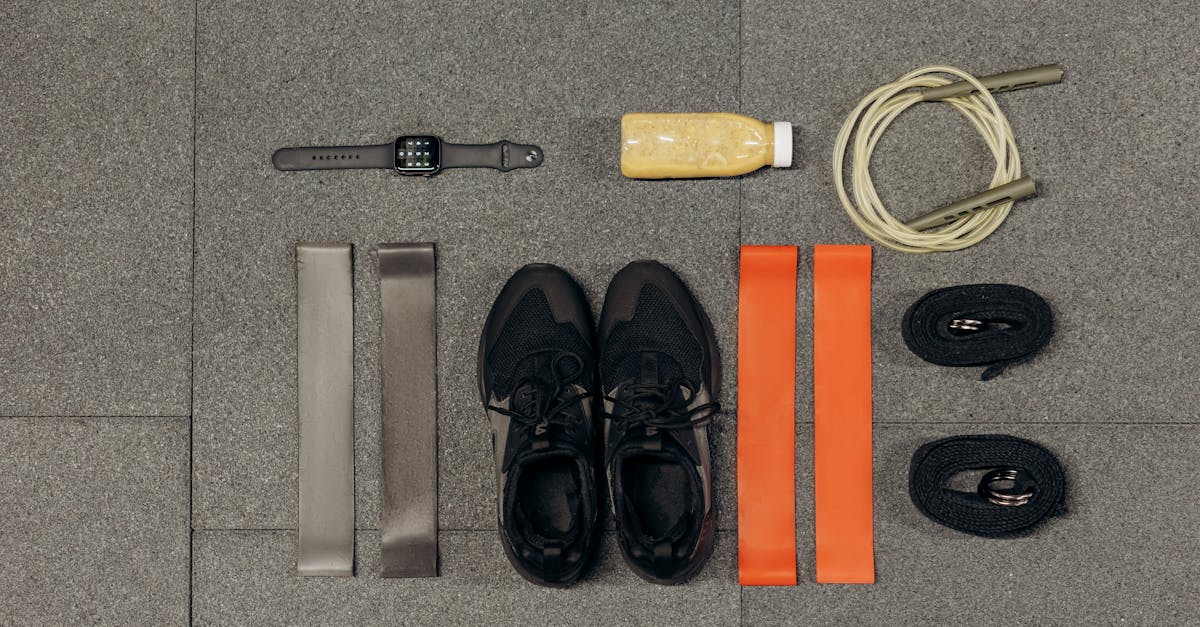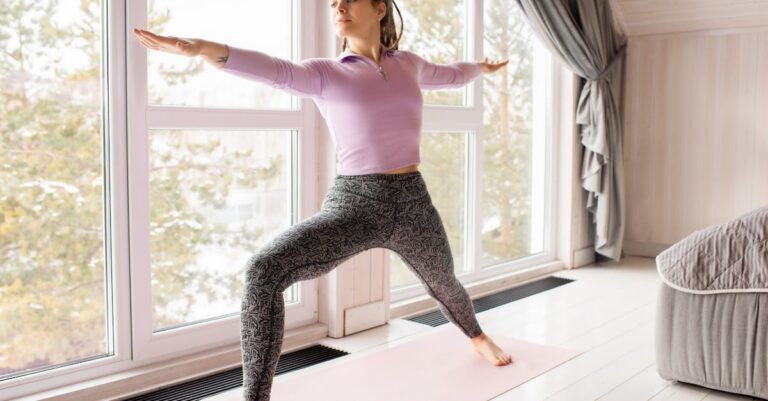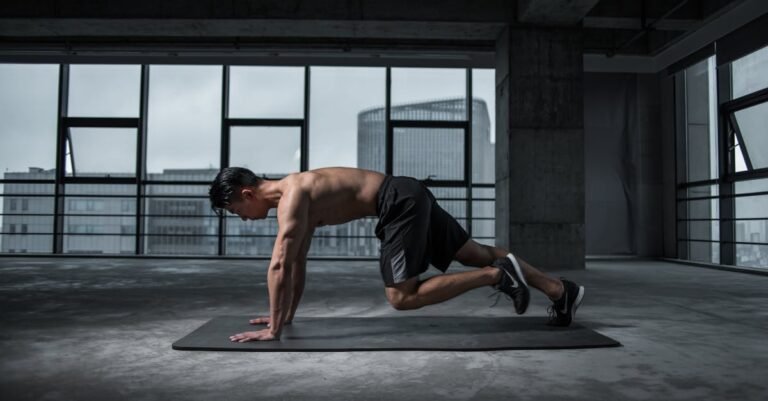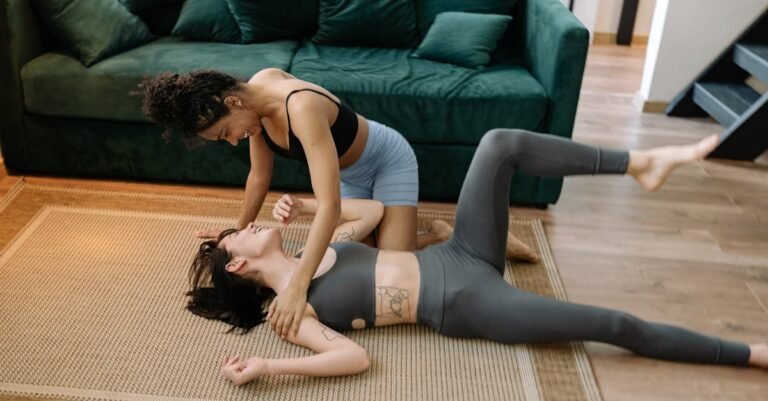Ever feel like just getting through the day takes more effort than it used to? Like carrying those grocery bags up the stairs feels like climbing Mount Everest, or picking up your toddler leaves your back screaming? You’re not alone! Sometimes, everyday life just feels… heavy. But what if you could build strength specifically for those real-life moments, right from your living room? That’s exactly what we’re diving into here. We’ll explore functional training – exercises designed to make your daily activities easier and help you feel stronger and more capable. Get ready to learn simple, effective ways to train your body for the things you *actually* do every day!
What’s Functional Training, Anyway? It’s Not What You Might Think!
Okay, so “functional training” sounds a bit fancy, but it’s super simple. Think about it like this: instead of just lifting heavy things to get big muscles (which is cool too!), functional training focuses on movements that copy what you do in real life. It’s training for living.
Remember lifting that awkward, heavy box last time you moved? Or twisting to grab something from the back seat of the car? Or just getting up off the floor? Those are the kinds of movements functional training helps with. It uses exercises that work multiple muscle groups together, just like they have to work together when you’re doing chores, playing sports, or chasing after your dog. It’s less about isolating one tiny muscle and more about making your whole body work as a team.
Why Should I Care? The Awesome Real-Life Perks
So, why swap your couch time for some functional moves? Because the payoff is huge for your everyday life! Imagine this: You’re carrying all the groceries in one trip, easily. Boom. Or maybe you’re playing tag with your kids in the park and you feel quick and agile, not creaky. That’s the magic.
Functional training can help:
- Make daily tasks (lifting, bending, reaching) feel way easier.
- Improve your balance and coordination, meaning fewer “oops” moments or stumbles.
- Reduce your risk of injury, because your body learns to move safely and efficiently.
- Boost your overall strength and stamina, so you have more energy throughout the day.
- Just generally help you feel more capable and confident in your body.
It’s about making your body better prepared for whatever life throws at you, whether it’s hoisting a suitcase or just getting out of a low chair without groaning.
Your Living Room = Your New Gym (Seriously!)
Good news! You don’t need a fancy gym membership or tons of expensive equipment. Your biggest tool is your own bodyweight! Think about push-ups, squats, lunges – these are all amazing functional exercises you can do anywhere.
Want to add a little challenge? Get creative with household items:
- Stairs: Great for step-ups and calf raises.
- Chairs or sturdy coffee tables: Perfect for tricep dips or incline push-ups.
- Water bottles or milk jugs: Fill ’em up for some makeshift weights for rows or presses.
- A backpack: Load it with books or cans for weighted squats or lunges.
The point is, you can get a killer functional workout without turning your home into a professional gym. It’s all about using what you’ve got!
The Moves That Matter: Your Functional Training Toolkit
Let’s break down the basic types of movements that functional training often includes. These are the building blocks for making everyday tasks easier:
- Squatting: Think sitting down and standing up, getting in and out of the car, or picking up something moderately heavy off the floor. Squats (using just bodyweight or holding that backpack) train your legs and core for this fundamental movement.
- Lunging: Anytime you step forward, backward, or sideways, like vacuuming or stepping over an obstacle, you’re basically lunging. Lunges build leg strength and improve balance.
- Hinging: This is bending at the hips, like when you pick up something heavy (or light!) off the ground with a straight back. Think deadlifts, but you can practice the motion with just your bodyweight or light objects first. Super important for protecting your back! Let’s say you’re grabbing that bag of dog food – hinging correctly makes it safer.
- Pushing: Pushing open a heavy door, getting up off the floor, or putting something on a high shelf. Push-ups (on the floor, against a wall, or on your knees) and overhead presses (using those water bottles!) cover this.
- Pulling: Opening a door, starting a lawnmower, or pulling weeds. You can mimic this with resistance bands if you have them, or by doing rows using a sturdy table or those filled water jugs.
- Carrying: Hauling groceries, carrying your kiddo, or lugging a suitcase. Farmer’s walks (just walking while holding weights – or milk jugs – at your sides) build grip strength and core stability.
Mixing these movement patterns into your routine covers pretty much all the ways your body needs to move day-to-day.
Putting It All Together: A Simple At-Home Plan
Okay, theory’s great, but how do you actually *do* it? Here’s a super simple way to start, maybe 2-3 times a week on non-consecutive days (give your body rest!).
1. Warm-up (5 minutes): Get your blood flowing! Think light cardio like jogging in place, jumping jacks, arm circles, leg swings. Just get moving and loosen up.
2. Main Moves (15-20 minutes): Pick one or two exercises from each category above. Don’t overthink it!
- Example Workout:
- Bodyweight Squats (3 sets of 10-15 reps)
- Push-ups (modify as needed – wall, knees, or full; 3 sets as many reps as you can do well)
- Walking Lunges (3 sets of 10-12 reps per leg)
- Glute Bridges (lying on back, lift hips; 3 sets of 15 reps – great for hinging practice!)
- Farmer’s Walk (walk across the room and back holding water jugs/heavy-ish items; 3 rounds)
Focus on good form over speed or number of reps. It’s better to do 5 perfect squats than 15 sloppy ones.
3. Cool-down (5 minutes): Gentle stretching. Hold each stretch for 20-30 seconds. Focus on muscles you worked, like chest, legs, and back.
This is just a starting point. As you get stronger, you can add more reps, sets, or try slightly harder variations!
Keep It Real: Listen to Your Body & Make It Fun!
This is maybe the most important part: pay attention to how you feel. If something hurts (like, *sharp* pain, not just muscle tiredness), stop! Don’t push through actual pain. It’s okay to modify exercises or take an extra rest day. Maybe today you do wall push-ups instead of knee push-ups, and that’s totally fine.
And hey, try to make it enjoyable! Put on your favorite music, work out with a friend or family member (even virtually!), or focus on how much stronger you feel carrying those groceries next week. For example, maybe you set a fun goal, like being able to easily lift your carry-on into the overhead bin on your next trip. When exercise feels less like a chore and more like investing in feeling good, you’re way more likely to stick with it. Consistency is key!
So, there you have it! Functional training isn’t some complicated fitness trend; it’s just a smart way to exercise for real life. By focusing on movements that copy everyday actions like squatting, pushing, pulling, and carrying, you build strength that actually helps you outside the “gym” – even if your gym is just your living room. Remember to start slow, focus on good form over doing tons of reps, and listen to your body. Using simple bodyweight exercises and maybe a few household items, you can create an effective routine that makes carrying groceries, playing with kids, and just navigating your day feel noticeably easier. Give it a try and feel the difference!










